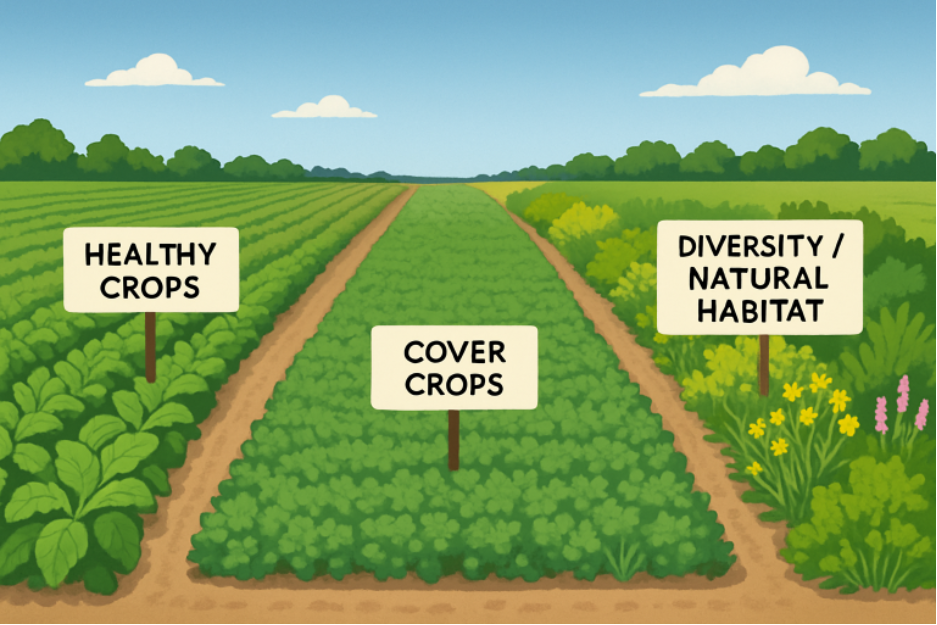Sustainable farmland practices are not just about environmental stewardship; they also enhance the long-term value of agricultural assets. By integrating methods that promote soil vitality, resource conservation, and biodiversity, landowners can thrive in a demanding agricultural landscape. These practices, combined with technological advancements such as precision agriculture, result in higher yields, lower input costs, and increased market resilience. Financial incentives and investments also support the transition to regenerative farming methods.
Enhancing Soil Health Through Regenerative Agriculture
Soil underpins sustainable farming. Practices such as cover cropping, crop rotation, and reduced tillage enhance soil health by increasing organic matter, stimulating microbial activity, promoting nutrient cycling, improving soil structure, and enhancing water retention. These lead to resilient crops and higher yields. Research shows regenerative practices enhance long-term farm profitability and biodiversity. Healthier soil reduces erosion and chemical dependency, supporting land value and ecological balance, making resources like the Iowa Land Company valuable for farmers and landowners seeking to protect and maximize their agricultural investments.
 Integrating Technology for Smarter Farming
Integrating Technology for Smarter Farming
Innovations in AgTech are transforming modern farms. Precision tools, such as drones, GPS equipment, and soil sensors, enable farmers to apply water, nutrients, and crop protectants with precision. This data-driven approach minimizes waste and cuts costs. Advanced irrigation systems monitor soil in real-time, saving up to 40% of water, while AI forecasts optimize planting and pest management, reducing risks and ensuring consistent yields.
Financial Incentives and Investments
Transitioning to sustainable or regenerative farming requires initial capital, but financial incentives—like carbon credits, subsidies, and investment funds—help offset costs and generate new revenue. Funds managed by Farmland LP and Microsoft’s Climate Innovation Fund demonstrate the combined support of private and public sectors. As farms adopt sustainable methods, investment grows, accelerating the transition as organizations recognize the long-term benefits for food companies, consumers, and governments.
Water Management and Conservation
Water scarcity and changing weather demand innovative management. Sustainable farms utilize rainwater harvesting, low-flow irrigation, and drought-resistant crops to optimize water use, safeguard aquifers, and enhance land value amid climate uncertainties. Efficient use reduces nutrient runoff, supporting ecosystems. Properties with water conservation infrastructure are in higher demand as climate resilience becomes a key investment.
Promoting Biodiversity and Ecosystem Services
Biodiversity is key to ecological balance on farms. Practices such as intercropping, hedges, and conserving natural patches enhance pollinators, improve pest control, and recycle nutrients. Biodiverse farmland provides vital services that support productivity and resilience. Diverse landscapes are less prone to pests, diseases, and weather extremes, resulting in steady yields and improved crops. These advantages benefit both the environment and the farm’s profitability.
Long-Term Economic Benefits
Though the transition to sustainable systems can be capital-intensive, the payoff is enduring. Fields managed with soil health in mind deliver greater crop yields, attract premium buyers, and command higher sales prices. Farmers using cover crops, for example, often project yield gains of 3%, land value increases of 3%, and price improvements of about 2% for their produce. These returns are evident in both direct operating margins and enhanced asset value, offering tangible rewards for effective stewardship.
Conclusion
Sustainable farmland practices present a compelling case for any forward-looking farmer or investor. By nurturing soil health, leveraging cutting-edge technology, and taking advantage of available financial incentives, landowners can increase productivity and profitability while mitigating future risks. More than just environmental best practice, this holistic approach is the cornerstone of maintaining farmland value and achieving agricultural success.







